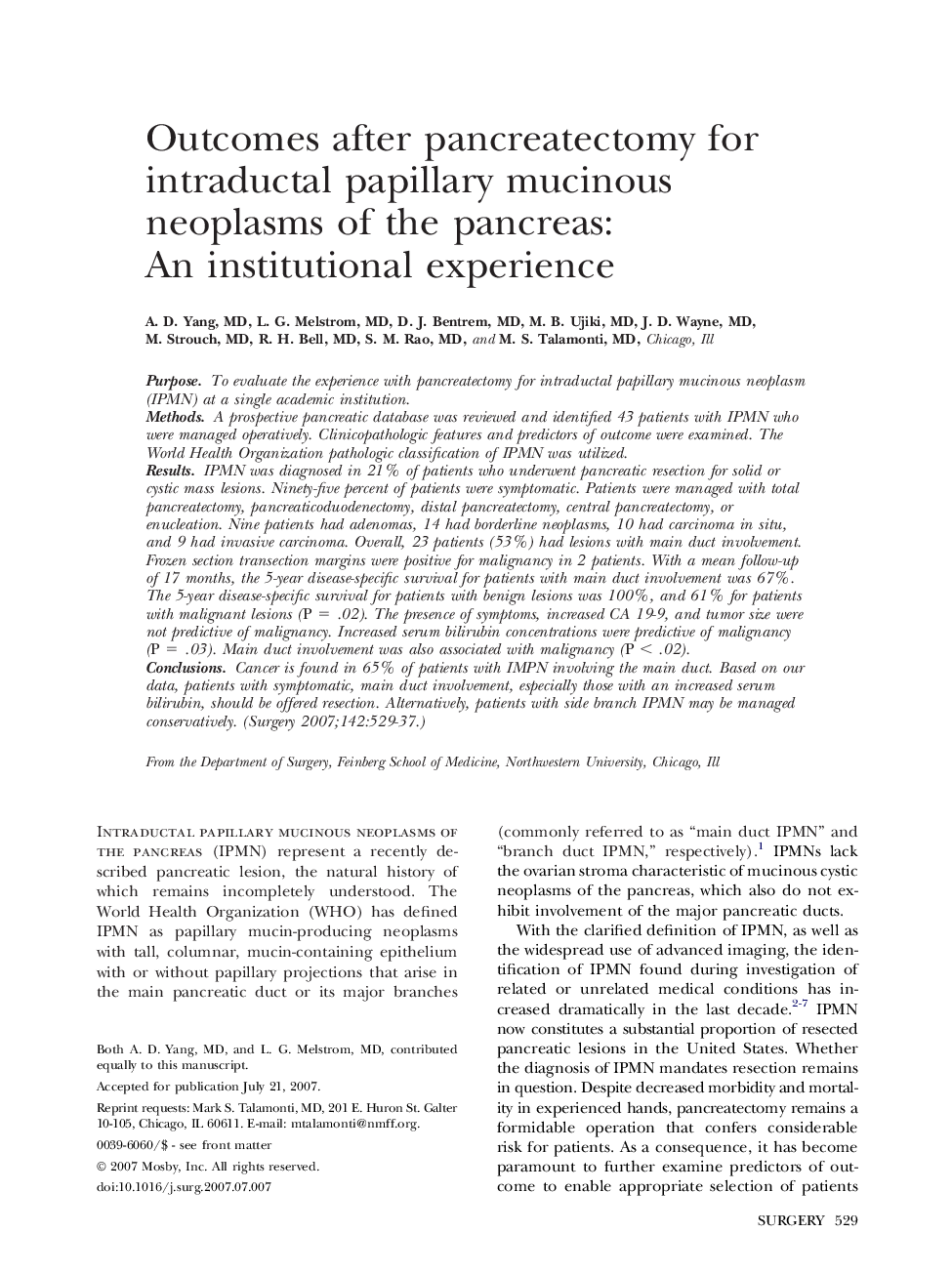| Article ID | Journal | Published Year | Pages | File Type |
|---|---|---|---|---|
| 4309490 | Surgery | 2007 | 9 Pages |
PurposeTo evaluate the experience with pancreatectomy for intraductal papillary mucinous neoplasm (IPMN) at a single academic institution.MethodsA prospective pancreatic database was reviewed and identified 43 patients with IPMN who were managed operatively. Clinicopathologic features and predictors of outcome were examined. The World Health Organization pathologic classification of IPMN was utilized.ResultsIPMN was diagnosed in 21% of patients who underwent pancreatic resection for solid or cystic mass lesions. Ninety-five percent of patients were symptomatic. Patients were managed with total pancreatectomy, pancreaticoduodenectomy, distal pancreatectomy, central pancreatectomy, or enucleation. Nine patients had adenomas, 14 had borderline neoplasms, 10 had carcinoma in situ, and 9 had invasive carcinoma. Overall, 23 patients (53%) had lesions with main duct involvement. Frozen section transection margins were positive for malignancy in 2 patients. With a mean follow-up of 17 months, the 5-year disease-specific survival for patients with main duct involvement was 67%. The 5-year disease-specific survival for patients with benign lesions was 100%, and 61% for patients with malignant lesions (P = .02). The presence of symptoms, increased CA 19-9, and tumor size were not predictive of malignancy. Increased serum bilirubin concentrations were predictive of malignancy (P = .03). Main duct involvement was also associated with malignancy (P < .02).ConclusionsCancer is found in 65% of patients with IMPN involving the main duct. Based on our data, patients with symptomatic, main duct involvement, especially those with an increased serum bilirubin, should be offered resection. Alternatively, patients with side branch IPMN may be managed conservatively.
